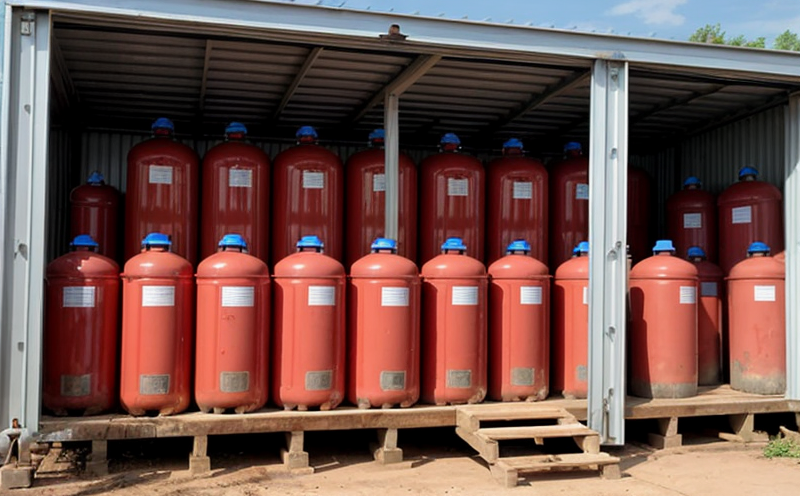Gas cylinder storage inspection
In environmental health and safety (EHS) management, gas cylinders are critical components that require stringent inspection to ensure operational safety. These cylinders typically contain hazardous materials such as gases like oxygen, nitrogen, argon, or corrosive liquids which can pose significant risks if not handled properly. Proper storage is essential not only for the immediate environment but also to protect against potential leaks, explosions, and other hazards.
The inspection process begins with a thorough inventory of all gas cylinders present in the facility. This involves identifying each cylinder by its type, contents, date of last inspection, and any other relevant identifiers. Once identified, these cylinders are moved to an examination area where they will undergo detailed scrutiny.
During this examination, several key parameters are checked. These include visual inspections for any signs of damage or leaks; ensuring all safety devices such as pressure relief valves are functioning correctly; verifying the integrity of seals and caps; checking calibration labels on meters attached to cylinders; confirming that temperature ranges specified by manufacturers are being adhered to; assessing whether there has been any visible corrosion or wear-and-tear.
For more specialized gases, additional checks may apply depending upon their chemical nature. For instance, those containing oxidizing agents might need extra attention regarding compatibility with other materials in the storage area. Likewise, cryogenic liquids require special handling due to extremely low temperatures that could affect surrounding structures if not managed appropriately.
The inspection also involves checking documentation related to each cylinder. This includes reviewing manufacturer’s specifications sheets, original purchase orders, and records of previous inspections or maintenance activities performed on the cylinders. Compliance with relevant regulations is paramount here; non-compliance can lead to severe penalties under environmental laws.
After completing all examinations, a detailed report is generated documenting findings from each cylinder inspected. This document serves multiple purposes including serving as proof that proper procedures were followed during inspection, providing information useful for future reference or training purposes, and acting as evidence in case of any accidents involving the stored gases later on.
Why It Matters
The importance of gas cylinder storage inspections cannot be overstated given their role within EHS frameworks. Proper management helps prevent incidents like explosions or leaks which could result in injuries to personnel, property damage, environmental contamination, and costly downtime for operations.
From a business standpoint, compliance with regulations reduces liability risks associated with hazardous materials handling. It also contributes positively towards maintaining good standing within regulatory bodies responsible for enforcing these standards. Furthermore, regular inspections help identify potential issues early on before they escalate into larger problems, thereby promoting safer working conditions overall.
Applied Standards
| Standard | Description |
|---|---|
| ISO 14099-1:2018 | Specification for the storage and handling of gas cylinders containing oxidizing gases. |
| ASTM E573-16a | Standard test method for determining the pressure relief capability of safety devices on high-pressure gas containers. |
| EN 14220:2009 | Specification for the storage and handling of gas cylinders containing flammable gases. |
| IEC 60375-1:2018 | Particular requirements for the storage and handling of cryogenic liquids in insulated containers. |
Scope and Methodology
The scope of gas cylinder storage inspection encompasses various aspects including physical integrity checks, functional performance evaluations, adherence to regulatory requirements, and documentation verification. The methodology typically follows a structured approach comprising several steps:
- Preparation: Gather necessary tools like measuring instruments, protective gear, and reference materials.
- Inventorization: Create an inventory list detailing all cylinders present along with pertinent details such as contents, capacity, last inspection date etc.
- Visual Inspection: Examine each cylinder externally for any visible signs of damage or wear-and-tear.
- Functional Testing: Perform tests on safety accessories like pressure relief valves and temperature regulators ensuring they operate correctly.
- Documentation Review: Check all associated documents including manufacturer’s specs, purchase orders, previous inspection reports etc.





